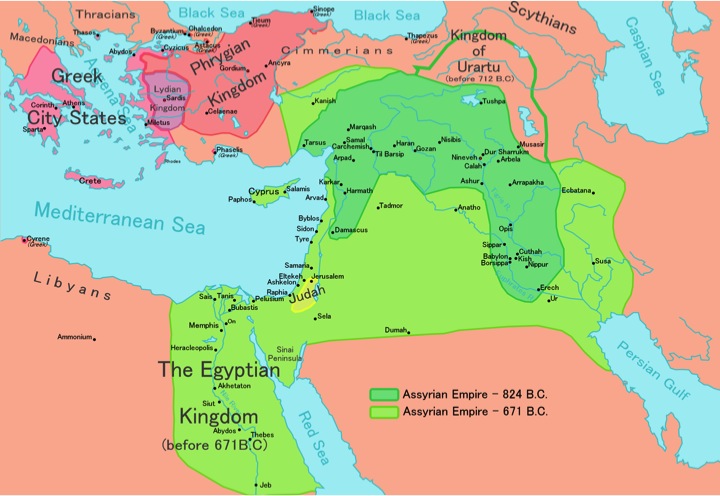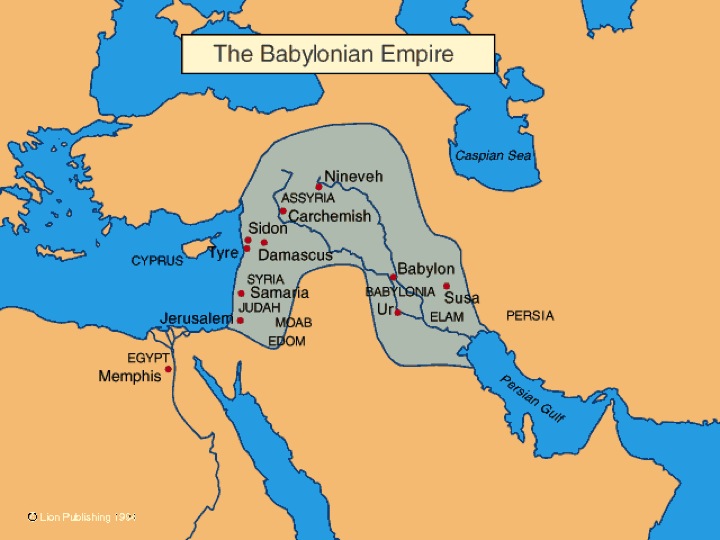Reading: The Unique Literature of Lamentations (Video Slides)
#30 The Unique Literature of Lamentations: An Introduction
Jeremiah’s Times
- Assyria had long ago destroyed the northern brother nation called “Israel” (722)
- Judah was now a tiny community with diminishing resources, constantly tossed around by bigger nations
- Assyria was being beaten down between 612 (battle of Nineveh) and 605 (battle of Carchemish) by its eastern bully province, Babylon
- Interesting Note: Assyria had long “owned” and dominated Egypt, so when the Babylonians began this revolt, the Egyptian army under Pharaoh Neco II was called up as support. On the way from Egypt to Carchemish, King Josiah of Judah tried to stop Pharaoh Neco’s advance at Megiddo in 609, and was killed! (2 Kings 23:29; 2 Chronicles 35:20-27). - Babylon immediately took over Palestine
- Judah was experiencing a rapid turnover of kings, many of whom were puppets of Babylon
- Egypt loomed in many minds as either the only ally strong enough to withstand Babylon, or the safe haven for refugees escaping Babylonian sieges & deportations
The Assyrian Empire


The Lamentations (of Jeremiah?)
- Traditionally ascribed to Jeremiah: hence their location in biblical literature immediately following Jeremiah
- Four acrostic laments (1-4) plus another lament (5)
- 1 (22 X 3 couplets, only the first of which begins with the successive letter): Jerusalem is like a lonely widow suffering from many oppressions
- 2 (22 X 3 couplets, only the first of which begins with the successive letter): Yahweh’s covenant anger and the resulting judgment
- 3 (22 X 3 lines, each of which begins with the successive letter): Personalized pain because of Yahweh’s judgment, coupled with an expectation of restoration
- 4 (22 X 2 couplets, only the first of which begins with the successive letter): the pain of Jerusalem’s ruin personalized
- 5 (22 couplets, not acrostic): a prayer of repentance, seeking Yahweh’s deliverance
Last modified: Thursday, August 9, 2018, 9:33 AM
